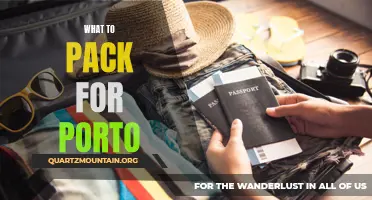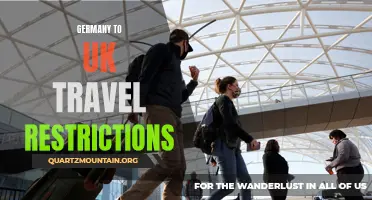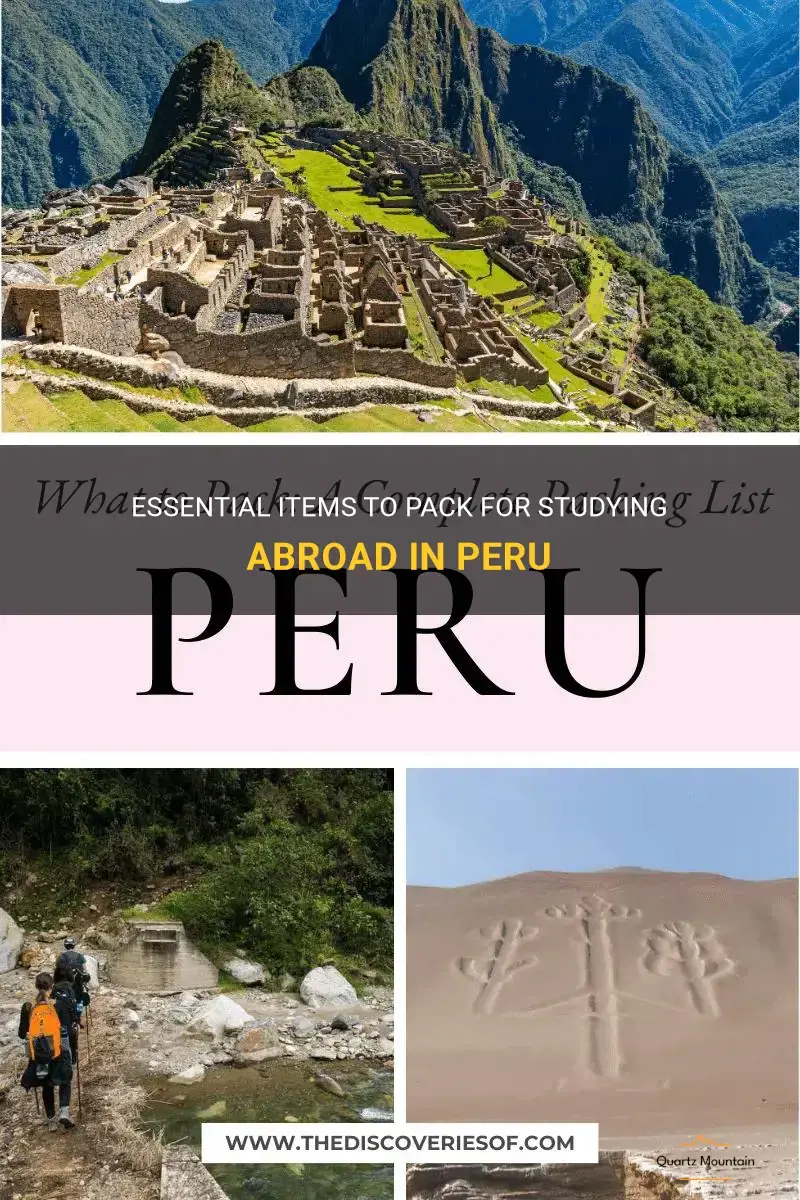
Are you planning on studying abroad in Peru? Congratulations on taking this incredible opportunity to immerse yourself in a new culture and expand your horizons. As you prepare for this exciting adventure, it's important to ensure you have all the essential items packed to make your experience in Peru unforgettable. From practical necessities to cultural and outdoor exploration gear, we've got you covered. So, let's dive into the must-have items for studying abroad in Peru and get ready for an adventure of a lifetime!
What You'll Learn
- What are the essential items to pack when studying abroad in Peru?
- Are there any specific clothing items or accessories that are necessary for the climate and culture in Peru?
- How can I pack efficiently and ensure that I have everything I need for a semester abroad in Peru?
- Are there any electronics or technology devices that I should pack for studying abroad in Peru?
- Are there any specific cultural customs or norms in Peru that I should be aware of when packing for my study abroad experience?

What are the essential items to pack when studying abroad in Peru?
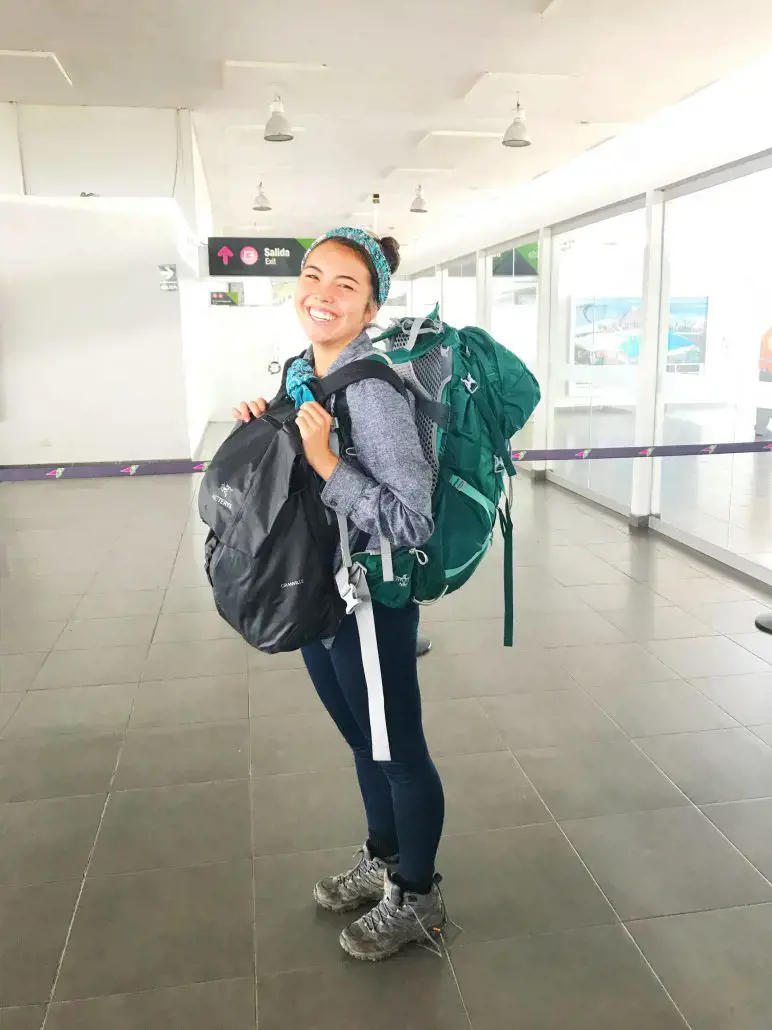
Studying abroad in Peru can be an exciting and enriching experience. However, it's important to be well-prepared and pack the essential items to ensure a smooth and comfortable stay. Whether you're studying in Lima, Cusco, or any other city in Peru, here are the top items you should consider packing.
- Travel documents: Before leaving for Peru, make sure you have all your necessary travel documents in order. This includes your passport, visa, and any other required identification. It's also a good idea to make copies of these documents and keep them in a separate location in case of loss or theft.
- Clothing: Peru has a diverse climate, ranging from warm coastal areas to high-altitude mountain regions. Pack a mix of clothing to account for these varying temperatures. Lightweight and breathable clothing is suitable for coastal areas, while warmer clothing, such as sweaters and jackets, will be necessary for colder regions like the Andes. Don't forget to pack comfortable walking shoes or hiking boots if you plan to explore Peru's beautiful landscapes.
- Medications and first aid kit: It's important to have a supply of any necessary medications you take regularly. Additionally, pack a basic first aid kit that includes items like band-aids, antiseptic cream, painkillers, and any other essential items you might need in case of minor injuries or illnesses.
- Electronics: Peru uses a 220V electrical system, so make sure to pack appropriate voltage converters and adapters for your electronic devices. A reliable power bank can also come in handy, especially if you're planning to travel to remote areas where electricity may not be readily available.
- Travel insurance: It's essential to have comprehensive travel insurance that covers medical expenses, trip cancellation, and lost or stolen belongings. This will provide you with peace of mind should any unexpected events occur during your stay in Peru.
- Basic toiletries: While you can find most toiletries in Peru, it's a good idea to pack travel-sized versions of your preferred products to ensure you have them readily available. Don't forget to pack essentials like toothpaste, shampoo, conditioner, and any other personal care items you need on a daily basis.
- Money and banking: Before you leave, notify your bank of your travel plans to avoid any issues with accessing your funds abroad. It's also a good idea to have a mix of cash and credit cards, as some smaller establishments may not accept cards.
- Language resources: If you're not fluent in Spanish, it can be beneficial to pack a Spanish phrasebook or download a language learning app to help you communicate with locals. Knowing basic phrases can greatly enhance your experience and make it easier to navigate daily life in Peru.
- Portable water filter: While Peru has safe drinking water in most urban areas, it's still advisable to have a portable water filter or purifier, especially if you plan to trek or travel to rural regions. This will ensure you have access to clean drinking water throughout your trip.
- Travel guidebook: A good travel guidebook specific to Peru can be immensely helpful in planning your adventures and exploring the country. It will provide detailed information on popular tourist sites, cultural norms, and invaluable tips to make the most of your time in Peru.
Packing these essential items will help ensure a comfortable and enjoyable study abroad experience in Peru. Remember to also research the specific requirements of your program or university to ensure you have all the necessary items for your academic pursuits. With thorough preparation, you can make the most of your time studying abroad in this beautiful and culturally rich country.
Packing Essentials for an Amazing Two-Week Mediterranean Cruise
You may want to see also

Are there any specific clothing items or accessories that are necessary for the climate and culture in Peru?
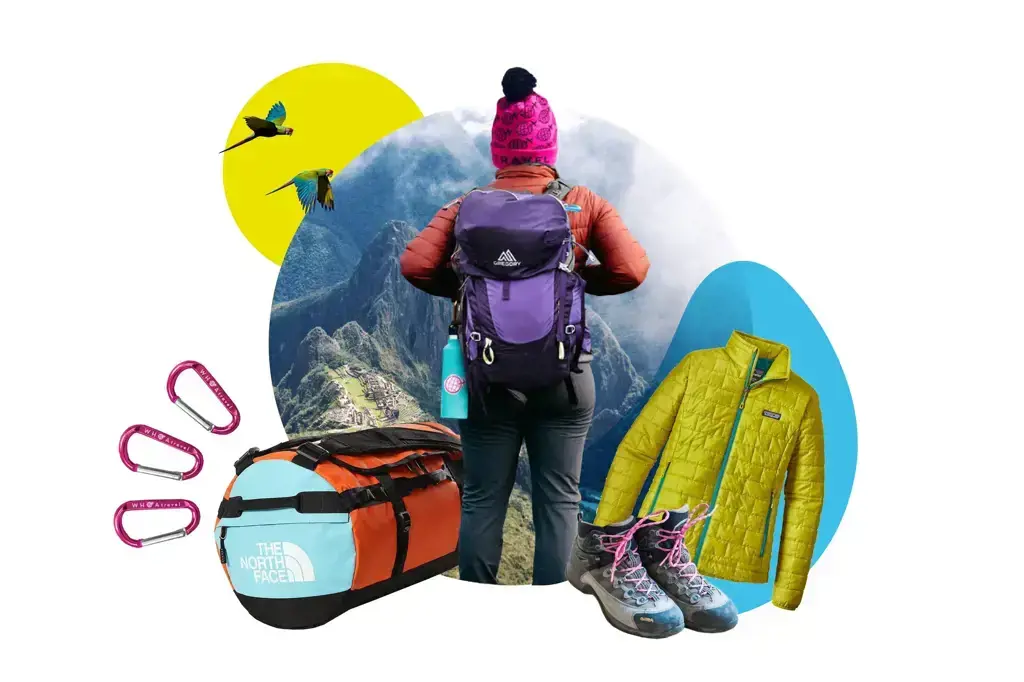
Peru is a country with diverse climates and cultures, which means that the clothing and accessories required will vary depending on the specific region and time of year. In general, it is important to pack clothing that is suitable for both warm and cool temperatures, as well as items that are culturally appropriate.
The climate in Peru can range from hot and humid in the coastal areas to chilly and damp in the mountains. It is advisable to dress in layers, so that you can add or remove clothing as needed throughout the day. In coastal areas such as Lima, lightweight and breathable fabrics are recommended, such as cotton or linen. These will help to keep you cool and comfortable in the tropical heat.
If you plan to visit the mountains or high-altitude areas like Cusco and Machu Picchu, it is important to pack warmer clothing. The temperatures can drop significantly at night, so items like sweaters, jackets, and long pants are essential. Additionally, it is important to bring waterproof clothing, as rain showers are common in the mountains.
In terms of cultural considerations, it is important to be respectful of the local customs and traditions. Peru has a rich indigenous heritage, and many communities still maintain their traditional dress. If you are planning to visit these communities, it is important to dress modestly and avoid wearing clothing that may be seen as disrespectful or appropriative. This includes items like mini skirts, tank tops, and clothing with religious or political symbols.
In addition to clothing, there are a few accessories that can be useful to have while traveling in Peru. A good pair of walking shoes or hiking boots is essential, especially if you plan to do any trekking or hiking. Peru is home to many beautiful natural landscapes, and having the right footwear will make your exploration much more enjoyable. It is also a good idea to bring a hat and sunglasses to protect yourself from the strong sun, as well as a reusable water bottle to stay hydrated.
Overall, when packing for a trip to Peru, it is important to consider both the climate and the cultural norms. By taking the time to research and pack appropriately, you can ensure that you are comfortable and respectful throughout your journey. Remember to dress in layers, bring appropriate footwear, and be mindful of the local customs. With the right clothing and accessories, you will be well-prepared to explore all that Peru has to offer.
Essential Items to Pack for Your Trip to Bandung
You may want to see also

How can I pack efficiently and ensure that I have everything I need for a semester abroad in Peru?

Packing for a semester abroad in Peru can be an exciting yet challenging task. It's important to pack efficiently and ensure that you have everything you need for your time away from home. In this article, we will provide you with some scientific insights, practical recommendations, step-by-step instructions, and examples to help you pack effectively for your semester abroad in Peru.
- Research the Climate: Before you start packing, it's crucial to research the climate of Peru during the time of your semester abroad. Peru has diverse climatic regions, ranging from tropical Amazon rainforests to high-altitude Andean mountains. By understanding the climate, you can pack the appropriate clothing and accessories. For example, if you'll be spending time in the mountains, pack warm layers, while light and breathable clothing would be more suitable for the coastal areas.
- Make a Packing List: Creating a packing list can help you organize your thoughts and ensure that you don't forget anything essential. Start by listing the basics, such as clothing, toiletries, electronics, and travel documents. Then, think about any specific items you may need for your studies, leisure activities, or personal comfort. Remember to include any prescription medications or necessary health-related items.
- Pack Versatile Clothing: When it comes to clothing, it's important to pack versatile items that can be mixed and matched. Opt for lightweight, breathable fabrics that are suitable for a variety of weather conditions. Consider packing items that can be layered, such as cardigans or jackets, to accommodate temperature fluctuations. It's also useful to pack a few formal outfits for any special occasions or professional events.
- Pack Travel-Sized Toiletries: Toiletries can take up a lot of space in your luggage, so it's a good idea to pack travel-sized versions of your essential items. This will save space and make your luggage more manageable. Additionally, consider purchasing toiletries and other necessities once you arrive in Peru to reduce the weight of your suitcase.
- Check the Voltage Compatibility: If you plan to bring electronics, such as laptops or hairdryers, make sure to check the voltage compatibility with the electrical outlets in Peru. If necessary, purchase a voltage converter or adapter to ensure that your devices can be used safely. It's also advisable to bring a universal power strip so that you can charge multiple devices at once.
- Leave Some Space for Souvenirs: It's almost inevitable that you'll pick up some souvenirs or mementos during your semester abroad in Peru. Leave some space in your suitcase or consider packing a collapsible duffel bag that you can use for any additional items you acquire during your travels.
Example: Let's say you're packing for your semester abroad in Peru, which will take place from January to May. You research the climate and find that during this period, Peru experiences a mix of climates, with the mountains being cool and the coastal areas being warm. You create a packing list that includes versatile clothing items like lightweight pants, t-shirts, sweaters, a rain jacket, and comfortable walking shoes. You pack travel-sized toiletries and make sure to check your electronics' voltage compatibility. Lastly, you leave some space in your suitcase for souvenirs and mementos that you'll collect during your time in Peru.
By following these scientific guidelines, practical recommendations, step-by-step instructions, and examples, you can pack efficiently and ensure that you have everything you need for your semester abroad in Peru. Remember to plan ahead, pack smart, and leave some room for flexibility, as unexpected situations may arise during your time in a foreign country. Enjoy your semester abroad and make the most of this once-in-a-lifetime opportunity!
Essential Items for Teens' Hospital Stay: A Complete Packing Guide
You may want to see also

Are there any electronics or technology devices that I should pack for studying abroad in Peru?
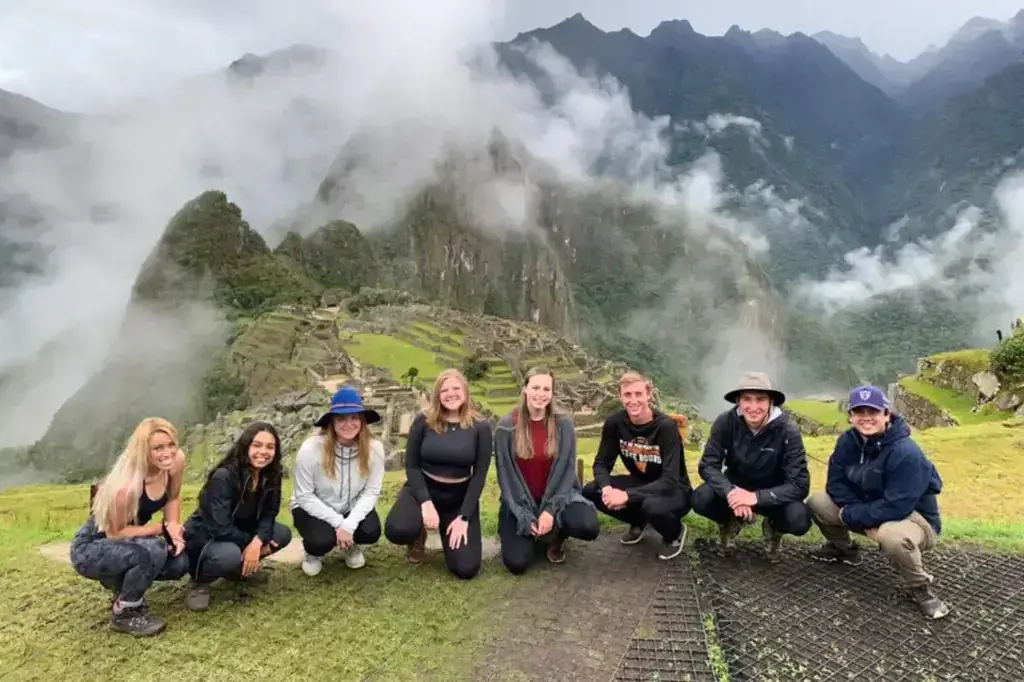
Studying abroad in Peru can be an exciting and enriching experience. As you prepare for your journey, it is important to consider the electronics and technology devices that you should pack. These devices can make your studying experience more efficient and enjoyable. In this article, we will discuss some essential electronics and technology devices that you should consider bringing with you to Peru.
- Laptop or Tablet: A laptop or tablet is a must-have for studying abroad. It allows you to complete assignments, research, and access online resources. Make sure to check the specific requirements for your program or university to ensure that your device meets any necessary specifications.
- Smartphone: A smartphone is a versatile device that can be used for various purposes while studying abroad. It can serve as a communication tool, a camera, and an information resource. Additionally, there are many useful apps available for students, such as language learning apps or travel guides.
- E-reader: An e-reader is a compact and convenient device that allows you to carry a multitude of books with you without the need for physical copies. This can be especially useful if you have limited space in your luggage or if you prefer digital reading.
- Noise-canceling headphones: Studying in a foreign country can sometimes be noisy, especially if you are living in a bustling city or a shared accommodation. Noise-canceling headphones can help you focus and concentrate on your studies by blocking out unwanted noise.
- Portable charger: In Peru, you may find yourself on the go for extended periods of time, whether it be exploring the city, visiting tourist attractions, or attending classes. A portable charger will ensure that your devices never run out of battery and that you can stay connected wherever you are.
- Universal plug adapter: Peru uses a different type of electrical plug than some other countries. It is essential to bring a universal plug adapter to ensure that you can charge your devices and use them with the local power outlets.
- External hard drive or cloud storage: Backing up your important files and documents is crucial during your time abroad. Consider bringing an external hard drive or utilizing cloud storage services to ensure that your academic work is safe and easily accessible.
- Camera: Peru is known for its stunning landscapes, vibrant culture, and historical sites. Bringing a camera to capture these moments can enhance your overall studying abroad experience. Whether it be a smartphone with a high-quality camera or a DSLR, make sure to bring a device that suits your photography needs.
- VPN (Virtual Private Network): A VPN can provide you with a secure internet connection, protect your privacy, and allow you to access restricted websites or online resources. This can be particularly useful when using public Wi-Fi networks or accessing academic materials that may be restricted in certain locations.
- USB flash drive: A USB flash drive is a handy device for transferring files between devices or sharing documents with fellow students. It is lightweight and easy to carry, making it a practical item to bring with you.
When packing your electronics and technology devices, be sure to consider the weight and size restrictions of your luggage. It is also a good idea to check the voltage requirements of your devices, as Peru operates on 220 volts, while some countries use a different voltage.
In conclusion, packing the right electronics and technology devices can greatly enhance your studying abroad experience in Peru. Make sure to bring a laptop or tablet, smartphone, e-reader, noise-canceling headphones, portable charger, universal plug adapter, external hard drive or cloud storage, camera, VPN, and USB flash drive. These devices will not only assist you in your academic pursuits but also provide you with the tools to capture and share your experiences in Peru.
Essential Items to Pack for a Memorable Love Burn Experience
You may want to see also

Are there any specific cultural customs or norms in Peru that I should be aware of when packing for my study abroad experience?
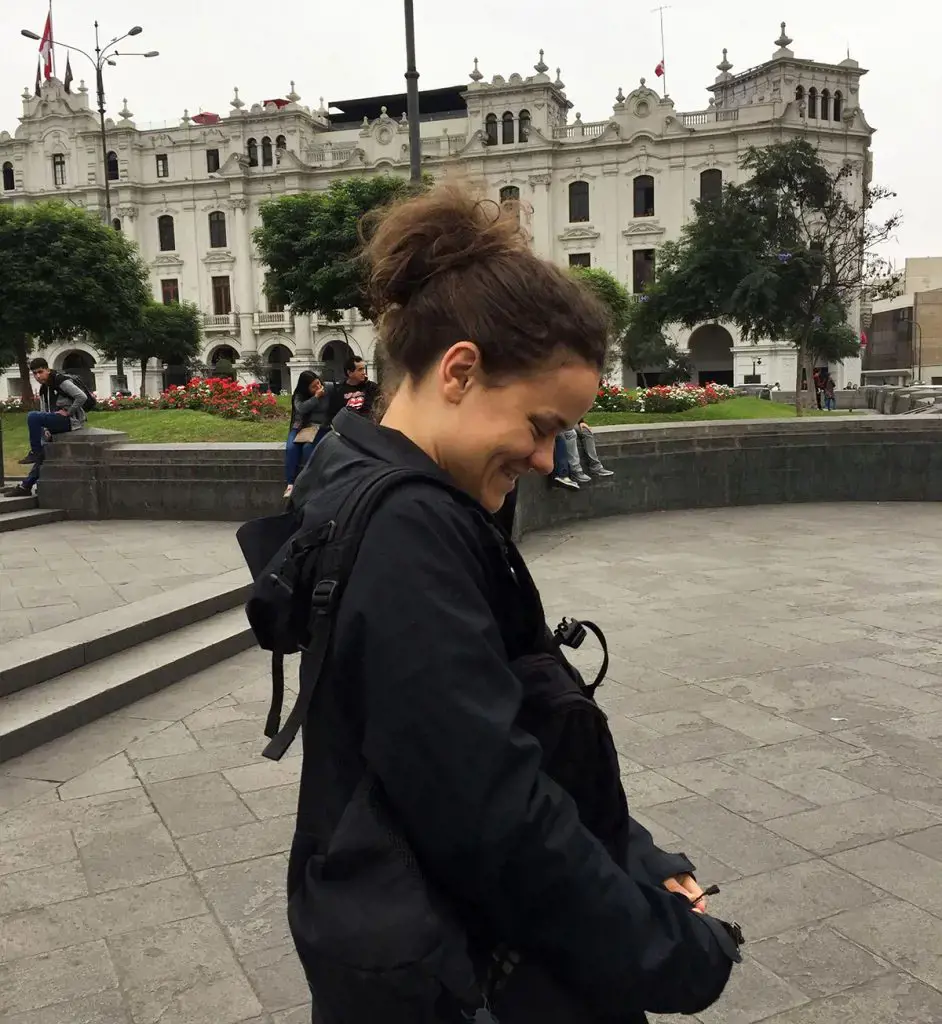
When preparing to study abroad in Peru, it's important to be aware of the country's cultural customs and norms in order to pack appropriately. Peru has a rich and diverse culture, and being respectful of local traditions will help you better integrate into the community and make the most of your experience. Here are some customs and norms to keep in mind when packing for your study abroad adventure in Peru:
- Modesty: Peruvian culture tends to be more conservative when it comes to dress, especially in rural areas or traditional communities. It is best to pack modest clothing that covers your shoulders and knees. This is particularly important when visiting religious sites or participating in community events.
- Layers and weather: Peru's geography varies greatly, from the coastal desert to the high Andes Mountains and the Amazon rainforest. In order to be prepared for the fluctuating temperatures, it's wise to pack a variety of clothing options. Make sure to include lightweight and breathable clothing for warmer climates, as well as warm layers for colder regions and high altitudes.
- Comfortable footwear: Peru is known for its diverse landscapes, including rugged terrain and cobblestone streets. It's important to pack comfortable and sturdy footwear that can withstand long walks and hikes. Having a good pair of walking shoes or hiking boots will be essential for exploring Peru's beautiful natural wonders.
- Rain gear: Peru's rainy season varies depending on the region, but it's always a good idea to pack some form of rain gear. A lightweight rain jacket or poncho can come in handy, especially if you plan on visiting the Amazon rainforest or spending time in the highlands where rain is more common.
- Respectful clothing for religious sites: Peru has a strong Catholic presence, and there are numerous churches and religious sites throughout the country. When visiting these sites, it is important to dress respectfully. This means avoiding shorts, sleeveless tops, and revealing clothing. It's a good idea to pack a shawl or scarf that can be used to cover your shoulders if needed.
- Sun protection: Peru has a high elevation, and the sun can be quite strong, even on overcast days. Packing a wide-brimmed hat, sunglasses, and sunscreen will help protect you from the sun's rays. It's also a good idea to bring a reusable water bottle to stay hydrated throughout the day.
- Cultural adaptability: While packing appropriately is important, it's equally important to have an open mind and be respectful of local customs and norms. Take the time to learn about Peruvian culture before your trip, and be willing to adapt your habits and behaviors to fit in with the local community. This can include learning a few basic Spanish phrases, practicing good table manners, and being open to trying new foods and experiences.
In conclusion, packing for your study abroad experience in Peru should take into account the country's cultural customs and norms. By being mindful of modesty, weather conditions, and respecting religious sites, you will ensure a more positive and enriching experience in this beautiful country. Remember to pack comfortable footwear, rain gear, and sun protection to fully enjoy all that Peru has to offer. With the right mindset and preparation, your study abroad experience in Peru will be one to remember.
Essential Items to Pack for a Memorable River Cruise in France
You may want to see also
Frequently asked questions
When packing clothes for your study abroad trip to Peru, it's important to consider the climate. Peru has diverse climates, so it's a good idea to pack a mix of lightweight, breathable clothing for warmer areas and warmer, layered clothing for colder areas. Be sure to pack comfortable walking shoes, as you'll likely be doing a lot of exploring on foot. It's also a good idea to pack a rain jacket or umbrella, as Peru can experience sporadic rain showers throughout the year.
In addition to clothes, there are a few other items you should consider bringing for your study abroad trip to Peru. It's a good idea to bring a travel adapter, as the electrical outlets in Peru may be different from those in your home country. It's also important to bring any necessary medications or prescriptions, as well as a first aid kit with basic supplies. You may also want to bring a reusable water bottle, as tap water in Peru is not safe to drink. Additionally, it's a good idea to bring a backpack or day bag for carrying your belongings while exploring.
Yes, there are a few specific items you should consider packing to enhance your cultural immersion in Peru. Bringing a Spanish-English dictionary or phrasebook can be helpful for communicating with locals who may not speak English. It's also a good idea to pack a small gift from your home country to share with your host family or new friends you may meet during your time in Peru. This can be a simple token of friendship and a way to show appreciation for their hospitality. Finally, be sure to pack an open mind and a willingness to immerse yourself in Peruvian culture and customs. This can greatly enhance your study abroad experience.


